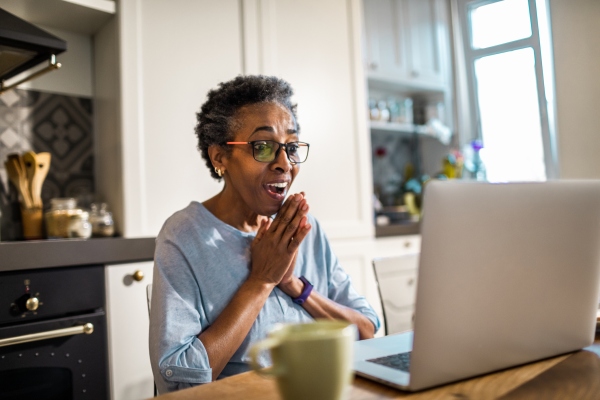Age-tech startups at this year’s CES demonstrated the potential breadth of the sector. If tech can help an older person live more comfortably, it can also help out a lot of other people. After all, the usefulness of things like mobility aids, health monitoring platforms and long-term financial planning aren’t limited to the elderly.
Yesterday, I covered the startups at AARP Innovation Labs’ virtual presentation, which ran the gamut from a financial literacy platform to a D2C startup creating products to address menopause.
Some of TechCrunch’s other coverage from this week included Labrador Systems’ Retriever, a robotic cart with a retractable tray system, shelves and optional fridge. Capable of carrying up to 25 pounds, Retriever assists people with limited mobility, and can deliver payloads like laundry, meals and other items around a house. It can be voice controlled via Alexa (the startup is backed by the Amazon Alexa Fund).
Sengled came out with a smart lightbulb capable of taking health readings, including heart rate, temperature and sleep tracking through radar sensing. While smart monitors aren’t a new idea, Sengled’s lightbulb is particularly unobtrusive. As our hardware editor Brian Heater noted, “it could have some potentially useful applications for eldercare, including fall detection.”
More tech giants are getting into the home health monitoring game, including LG, which announced that all of their 2021 and 2022 smart TVs will come with remote health platform Independa’s app installed. This means people will be able to use their LG TVs to have telemedicine appointments and get access to a pharmacy benefit plan.
Medical device startup Eargo launched its latest hearing aid, the Eargo 6. New features include Sound Adjust, a proprietary algorithm that automatically adjusts its settings so users don’t have to switch them manually and clarifies speech in noisy environments. It also includes Mask-Mode, an environmental offset that can be selected through Eargo’s app so users can hear people wearing masks more clearly.
Sensorscall unveiled update to its CareAlert remote monitoring app, which integrates with Apple Watch, Fitbit and other health tracking devices. Its new wellness dashboard allows family members and other caregivers to see trends in daily routines, sleep patterns, hygiene and kitchen usage. CareAlert was created by seniors who are aging-in-place (or continuing to live at home, often apart from other family).

BOCCO emo robot
BOCCO emo is one of the latest robot created for nursing homes. Developed by Yukai Engineering, the maker of plush robotic pillow Qoobo, Bocco emo is small enough to sit on a table and connects to medical IoT devices, monitoring patients’ vitals and alerting nurses about patients’ conditions. If a patient needs help, BOCCO emo will ‘talk’ to them until a nurse comes. It can also be used to update families about patients’ conditions. BOCCO emo has already undergone a trial program in Japan and is currently being used at hospitals in the country. The little robot uses “emo language,” which Yukai Engineering says means it is capable of understanding user’s speeches and emotions and responding accordingly with “sound effects, facial expressions and gestures.”
Startups that help enable independent living through the use of IoT sensors included Nodeus Solutions’ KoKoon, a network of small IoT sensors connected to mobile app for caregivers and family members. It’s algorithms learns a person’s habits, and informs caregivers if there are any changes in behavior.
Other startups that use a combination of IoT sensors, AI-based tech and mobile apps is Caregiver Smart Solutions, Unaide and Smart Macadam.
Credit: Source link






















